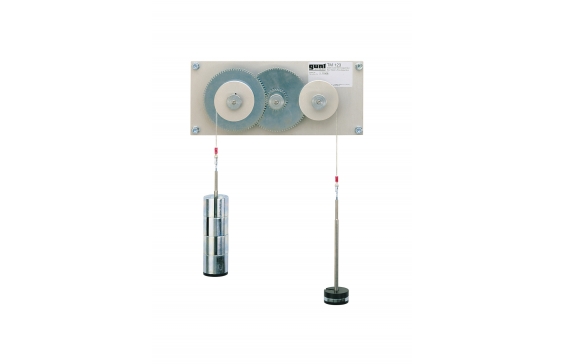TM 123 Spur gear unit

Gears and gear drives are machine elements that are classified as transmission or conversion elements. Gears transfer the rotational motion from one shaft to another by means of a positive connection. In a spur gear, the gears are arranged on parallel axles. This type of gear is characterised by its relatively simple construction, since only a few moving parts are used and the external teeth gears are simple to manufacture. Spur gears are robust and highly efficient because of their direct, purely mechanical transmission.
The TM 123 experimental unit illustrates the relationship between the ratio of the number of teeth and the transmission ratio of gears. Simple experiments are used to study the torque conversion in gear pairs and the efficiency of a gear. The forces are generated by weights and can be varied quickly and easily.
- design and principle of gear drives
4 gear wheels
- 2x Ø=126mm, 84 teeth
- 2x Ø=42mm, 28 teeth
- module: m=2mm
Pulleys effective radius: 35mm
Weights
- 2x 1N (hanger)
- 2x 0,25N
- 1x 0,5N
- 2x 1N
- 2x 2N
- 2x 2,5N
- function and design of gear drives
- 4 galvanised steel gear wheels
- 2 anodised aluminium pulleys
- ball-bearing-mounted gears and pulleys
- anodised aluminium base plate
development of the main variables and relationships in a straight-toothed spur gear
- velocity ratios in spur gears
- gear with intermediate wheel or two-stage gear
- influence of gear ratio on friction
- determine the efficiency
